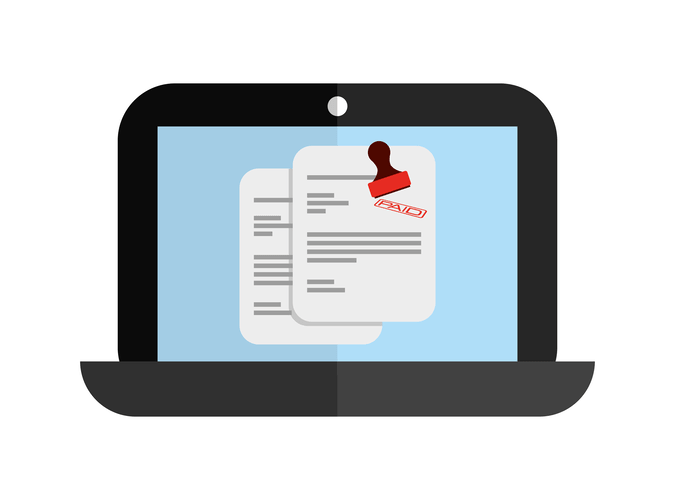Cash Flow To Common Stockholders Calculator Calculate Cash Flow To Stockholders

Operating cash flow also known as net cash from operating activities, refers to the money involved with producing and selling goods from ordinary operations. It also ensures from the income statement that the organization has enough funds to pay bills and handle expenses. A dividend is a payment made to shareholders that is proportional to the number of shares owned. Dividends are usually issued by companies that will not reap significant growth by reinvesting profits, and so instead choose to return funds to shareholders in the form of a dividend. Companies may also issue dividends in order to attract income investors, who are looking for a steady source of income, and which can be reliable long-term holders of company shares.
Fundamental Cash Flow Concepts: Terminology Breakdown
FCFF stands for Free Cash Flow to the Firm and represents the cash flow that’s available to all investors in the business (both debt and equity). Even if Company XYZ has strong sales and revenue, it could still experience diminished cash flows if too many resources are tied up in storing unsold products. A cautious investor could examine these figures and conclude that cash flow from assets formula the company may be struggling with faltering demand or poor cash management. As a measure of profitability and financial health, free cash flow offers several benefits over other points of analysis. These items are all listed in a cash-flow statement, but can also be identified by comparing non-current assets on the balance sheet over two periods.
- Because FCF accounts for changes in working capital, it can provide important insights into the value of a company, how its operations are being handled, and the health of its fundamental trends.
- It represents the money a company returns to its shareholders, either through dividends or other forms of financial return.
- In the case of Shania and her magazine, she might decide to move from print to digital, drastically reducing operational costs.
- We also identified common pitfalls that companies should avoid, such as inadequate cash reserves, heavy reliance on debt, ineffective cost control, and neglecting cash flow forecasting.
- If a firm pays lots of dividends but also sells many new stocks, stockholder payouts could be low because those sales bring in fresh cash that isn’t going straight to shareholders as dividends.
Key Takeaways and Recommendations for Investors and Managers
- This way, the investor can earn a positive return by exploiting the mispricing of the share.
- They offer insights into asset management and show how well a company handles its financial resources.
- Cash flow from operating activities indicates the cash earned or used in the company’s main business activities.
- As a result, free cash flow can seem to indicate a dramatic short-term change in a company’s finances that would not appear in other measures of financial health.
- Unlevered free cash flow is the cash flow a business has, without accounting for any interest payments.
- Alternatively, if the firm uses less debt and retains more earnings, it may have to pay less dividends or repurchase less shares, which may disappoint its shareholders and lower its share price.
- For example, if a company paid $1 million in dividends and repurchased $2 million worth of its own stock, the total cash flow to stockholders would be $3 million.
A company that consistently generates positive cash flow to stockholders demonstrates its commitment to providing value to its stockholders and its ability to generate profits. Welcome to the world of finance, where understanding and managing cash flow is key to the success of any business. Cash flow is often referred to as the lifeblood of a company, as it represents the movement of money in and out of a business over a specific period of time. While various types of cash flow exist, one crucial aspect that companies and investors focus on is cash flow to stockholders. The cash flow to stockholders is calculated by subtracting a company’s dividend payments to its stockholders from its net income and adding any net proceeds from the issuance of new stock.

What does the free cash flow formula tell you?
A change in working capital can be caused by inventory fluctuations or by a shift in accounts payable and receivable. If Company XYZ’s sales are struggling, they may choose to extend more generous payment terms to their clients, ultimately leading to a negative adjustment to FCF. Another limitation is that FCF is not subject to the same financial disclosure requirements as other line items in the financial statements. Free cash flow is often evaluated on balance sheet a per-share basis to evaluate the effect of dilution.

We explored the importance of cash flow to stockholders, highlighting its significance in evaluating a company’s financial stability and return on investment for shareholders. Understanding and analyzing cash flow to stockholders is crucial for both companies and investors. It allows businesses to assess their financial stability, reward shareholders, and demonstrate effective management.

- One of the main objectives of financial management is to maximize the value of the firm’s shares, which depends on the cash flow that the firm can generate for its stockholders.
- Just subtract the value of net new equity raised from the dividends paid by the company to get the result.
- Capital expenditures can be found within the cash flows from the investing section on the cash flow statement.
- Other factors from the income statement, balance sheet, and statement of cash flows can be used to arrive at the same calculation.
The discounted cash flow model is a method of valuing a share by estimating the present value of the future cash flows that the share will generate for the stockholder. The basic idea is to discount the expected cash flows by a rate that reflects the risk and the opportunity cost of investing in the share. One of the most important indicators of a company’s performance and value is its cash flow to stockholders. This is the amount of cash that the company pays out to its shareholders in the form of dividends and share repurchases, after meeting its obligations to creditors and other stakeholders. Cash flow to stockholders reflects the ability of the company to generate cash from its operations and investments, and to distribute it to the owners of its equity. A positive cash flow to stockholders indicates that a company is generating more cash from its operations than it is paying out to its shareholders in the form of dividends.
How to calculate cash flow: 7 cash flow formulas, calculations, and examples
In this article, I included what cash flow to stockholders is, how to calculate it, the formula, and an example. Yes, understanding this number helps you know if a company can afford to pay its shareholders without borrowing more money or selling more shares. Strong companies manage cash flow well – they keep shareholders happy and businesses healthy. The purpose of this calculation is to help investors understand how much cash a company generates and how much it distributes to shareholders. The sum of the three cash flow statement (CFS) sections – the net cash flow for our hypothetical company in the fiscal year ending 2021 – amounts to $40 million.
- Interest payments are excluded from the generally accepted definition of free cash flow.
- At the end of the day, all companies must eventually become cash flow positive to sustain their operations into the foreseeable future.
- This formula gives you a net figure, indicating the total amount of cash that has been returned to shareholders after the company has issued new equity.
- Finally, if the funds spent to buy back shares or pay dividends are approximately equal to the FCFE, then the firm is paying it all to its investors.
- Now, let’s say the WACC for XYZ Retail is calculated to be 4%, meaning 0.04 will be our discount rate (r).
- An example of a firm that has a high payout policy is Microsoft, which has paid out more than 80% of its earnings as dividends and share repurchases in the past decade.
P/CF is especially useful for valuing stocks with a positive cash flow but that are not profitable because of large non-cash charges. Cash flow is the movement of money into and out of a company over a certain period of time. If the company’s inflows of cash exceed its outflows, its net cash flow is positive. Investing cash flow is all about reporting the amount of cash generated or spent from various investment-related activities at a specific time. Speculative assets and sales of securities or assets are considered to be investing activities. Cash flow is like the pulse of a business—it keeps everything moving and healthy.
By using this formula, you can quickly determine the net cash flow to stockholders, which reflects the financial health of a company and its ability to provide returns to its investors. Cash flow from operating activities indicates the cash earned or used in the company’s main business activities. This includes cash payments, revenue generation, Medical Billing Process paying expenses, and funding working capital.